With the exception of the Alpha, Alienware's gaming PCs and laptops have never been subtle. Motorised fan vents, curvaceous chassis, and an array of glittering LED lights have come to define a brand that proudly screams gaming PC, even if such an approach seems horribly dated by today's more minimalist standards. But in a market awash with understated black boxes and aluminium shells, maybe there's room for something with a little more kick to it.
Enter Alienware's all-new Area 51, a gargantuan gaming desktop with enough power under its unique triad chassis to blaze through the most demanding of PC games. Even the base spec model features a 6-core Haswell-E processor, X99 motherboard, and DDR4 RAM, representing the most powerful platform the PC world has to offer. Naturally, this bleeding-edge tech comes at a price. Starting at $1699 and rising to well over $4500, the Area 51 does not come cheap. And, despite some neat features and design touches, I'm not so sure that chassis is worth the markup.
Design
Then again, I've never been a huge fan of the over-the-top gaming PC look, and the Area 51 is certainly one of the most outrageous. Standing at over 22-inches tall, over 9-inches wide, and over 25-inches in depth, the Area 51 is an imposing machine, even by gaming tower standards. This is largely due to its irregular triad shape, and LED-lit side panels, which bulge out from the case. Suffice to say, if you'd rather your gaming PC be tucked away discretely under a desk, this isn't the machine for you.
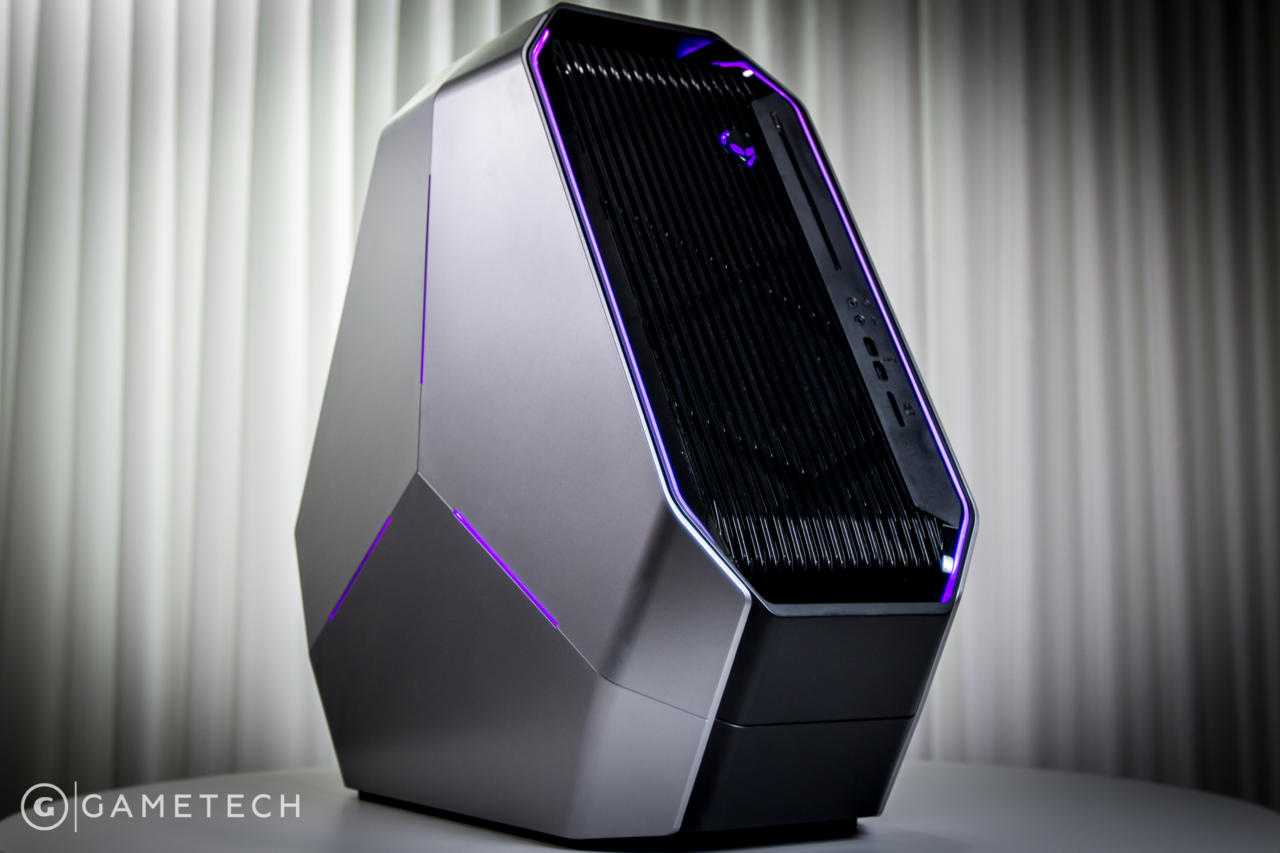
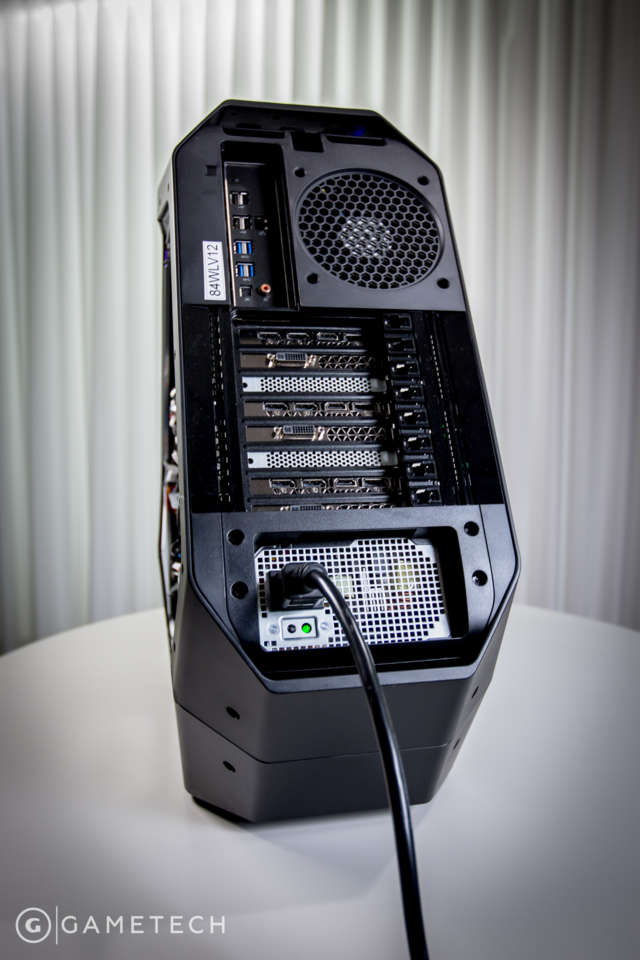
There's no arguing that the case has impact, though. With its grilled front panel and sleek, yet angular corners, the Area 51 has a far more modern look than its '50s sci-fi-like predecessors, and while nearly everyone in the GameSpot office was taken aback by its sheer size, many complimented its look. In traditional Alienware-style, the Area 51 is adorned with customisable RGB case lighting, which outlines the front panel, the alien head power switch, and accents the side panels. Aside from just changing the core colours of those lights, you can set up transitions between colours, or even have the case pulse like a piece of futuristic sci-fi furniture.
Aside from giving the Area 51 a startling look, the triad design does have some practical benefits. For starters, both the rear and front panel IO sit up at an angle, which makes it easier to plug in accessories and displays. You can also just tilt the whole thing forward for even easier access to the rear IO. That said, it's not something you'll want to do that often, because this thing is seriously weighty. The sturdy built-in handles certainly help if you do need to move it around, but at over 40lbs in weight (for the config I'm using at least), you'll need to put some muscle behind it to lift it.
Popping off the side panels--which easily come off via a lever on the top of the case--shows off the neat and tidy interior. There are two 120mm front intake fans, one at the top of the case, and one near the bottom that blows air towards the GPUs. There is a GPU support bracket sitting between the fan and the GPUs, but it shouldn't significantly block the airflow. The CPU is cooled by an all-in-one liquid cooler, with a 120mm radiator and fan set to exhaust out of the top of the case. All the drives (including the slim BluRay writer) are located behind the motherboard, with mounts available for two SSDs and a further three 3.5" hard drives. Even if you don't configure the system with all those drives in place, Alienware pre-mounts all the cables you need to hook them up, which is a nice touch.
Sadly, the drive bays aren't tool-free, so you'll to dig out some screws and a screwdriver to get them in and out. That's a disappointing omission for a PC that costs this much money. Similarly disappointing are the modular cables, which are your basic mismatched OEM set, and again, given the cost, it's odd not to find a more aesthetically pleasing and sturdier set of wrapped cables inside. These little issues aside, the Area 51's internal design is actually very good, and--with the exception of the SATA ports which sit underneath the GPUs, a problem not unique to the Area 51--it's relatively easy to access all the components should you wish to swap them out.
The internal design also has its benefits for airflow. By putting the drives behind the motherboard tray--which is the same approach that Corsair takes with its Air 540 and Air 240 cases--air can travel unobstructed over the GPUs and CPU cooler. Indeed, the Alienware is one of the quietest gaming PCs I've tested, and one of the coolest under load too. Idle CPU temperatures averaged just below 40 degrees centigrade, and under load rarely pushed over 60. Granted, the stock configurations only come with a mild overclock, but it's nice to see there's some headroom for further performance tweaking.
Specs and Options
The configuration I'm testing is the most expensive. Coming in at $4549, it features an Intel Core i7 5930K processor with a modest overclock to 3.9GHz, 16GB of 2133Mhz DDR4 RAM, a 1500 Watt modular power supply, a 256GB Samsung SSD, a 4TB hard drive, and three Nvidia GTX 980 graphics cards. That's a hugely powerful machine by any measure, but it's worth noting that you're paying a lot for the case and for the privilege of having a PC built for you.
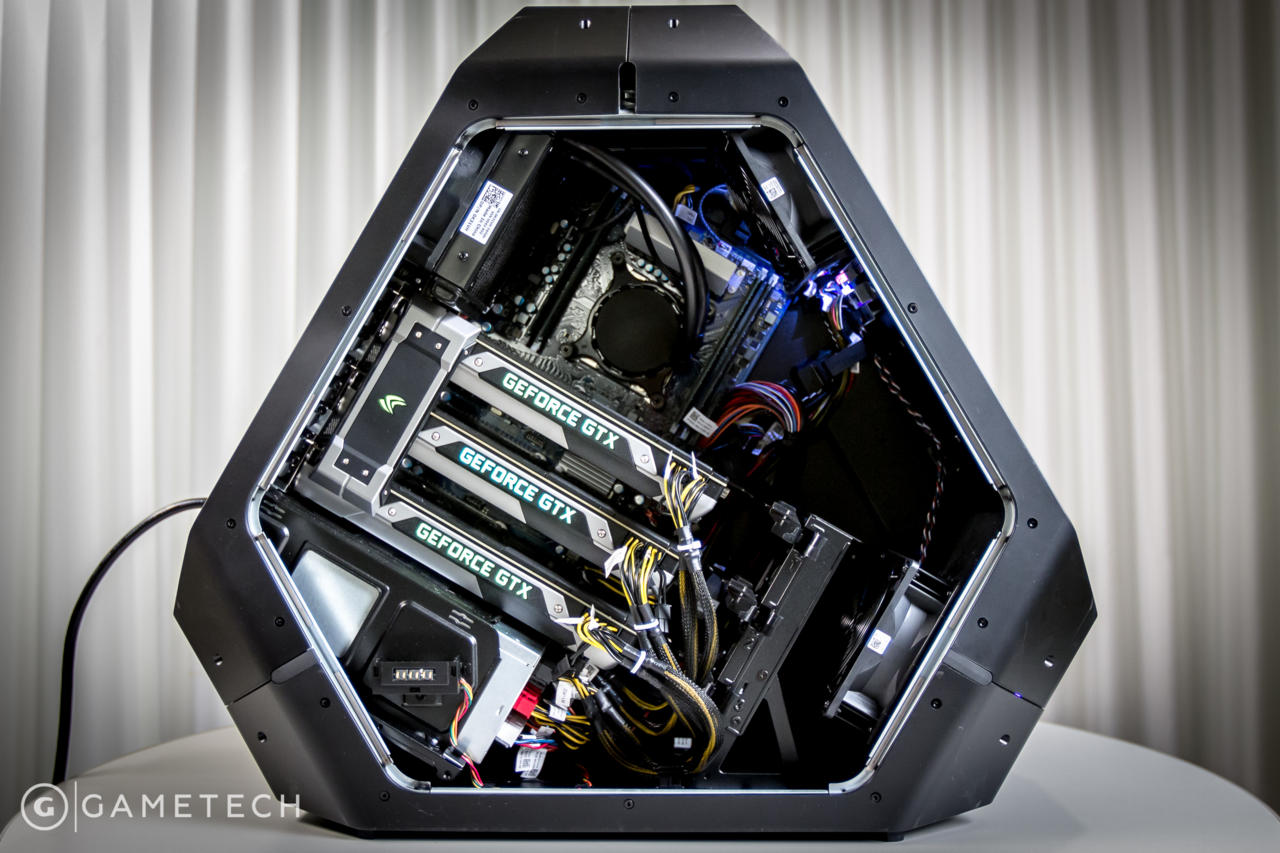
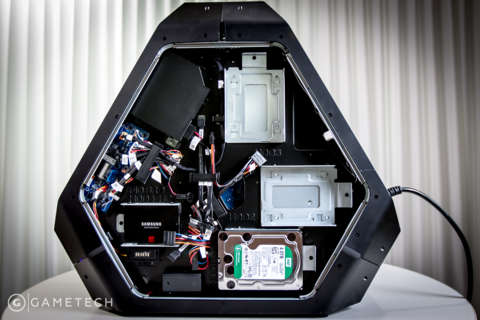
Just recently I built an X99-based PC that featured Intel's more expensive 8-core 5960K, along with faster 2866Mhz DDR4 RAM, a larger dual 120mm watercooler, two 512GB SSDs, and two GTX 980s. That PC came to a not-so-insubstantial $3714, but that's still a significant saving compared to the Alienware. Even if you added in another GTX 980 and a beefier power supply and motherboard to support it, it would still come in below the Area 51's $4549 asking price.
The Area 51's single 256GB SSD seems pretty stingy by comparison, and means that you have to store more games on the slower 4TB hard disk than you would with a larger drive. And there are other concessions to make too. Unlike most full size ATX X99 motherboards you can buy that feature eight RAM slots, the Area 51 only has four, so you're limited to using more expensive 8GB modules should you ever wish to go beyond 16GB. The Area 51 board also lacks other X99 niceties like an M.2 SSD slot, and SATA Express, both of which enable you to hook up drives to the PCIe bus for faster transfer speeds.
The sweet spot for the Area 51 initially seems to be the $2399 model, which features a Core i7 5820K processor and keeps the 6-cores, but drops the available PCIe lanes down to 28, while the more expensive $4099 model sticks with the 5930K. The trouble is, neither model lets you spec Nvidia's GTX 970 GPUs, which offer almost the same performance as the GTX 980 at nearly half the price. You either have to pick the pricy GTX 980, or go with older cards like the GTX 770 or 780. Quite why the GTX 970 isn't an option is a mystery.
| Component | $1699 Config | $2399 Config | $3049 Config | $4699 Config |
|---|---|---|---|---|
| CPU | Intel Core i7-5820K Processor (6-cores, 15MB Cache, Overclocked up to 3.8 GHz w/ Turbo Boost) | Intel Core i7-5820K Processor (6-cores, 15MB Cache, Overclocked up to 3.8 GHz w/ Turbo Boost) | Intel Core i7-5930K Processor (6-cores, 15MB Cache, Overclocked up to 3.9 GHz w/ Turbo Boost) | Intel Core i7-5930K Processor (6-cores, 15MB Cache, Overclocked up to 3.9 GHz w/ Turbo Boost) |
| RAM | 8GB Dual Channel DDR4 at 2133MHz | 16GB Dual Channel DDR4 at 2133MHz | 16GB Dual Channel DDR4 at 2133MHz | 16GB Dual Channel DDR4 at 2133MHz |
| PSU | Alienware 850 Watt | Alienware 850 Watt | Alienware 1500 Watt | Alienware 1500 Watt |
| GPU | AMD Radeon R9 270 with 2GB GDDR5 | Nvidia GeForce GTX 780 with 3GB GDDR5 | Dual Nvida GeForce GTX 770 graphics with 4GB GDDR5 (2x 2GB) GDDR5 | Triple Nvidia GeForce GTX 980 graphics with 12GB total GDDR5 (3x 4GB) GDDR5 |
| Storage | 2TB 7200RPM SATA 6Gb/s | 128GB SSD 6Gb/s Main + 2TB 7200RPM SATA 6Gb/s Storage | 128GB SSD 6Gb/s Main + 2TB 7200RPM SATA 6Gb/s Storage | 256GB SSD 6Gb/s Main + 4TB 6kRPM SATA 6Gb/s Storage |
| Optical | Slot-Loading Dual Layer DVD Burner (DVD±RW, CD-RW) | Slot-Loading Dual Layer DVD Burner (DVD±RW, CD-RW) | Slot-Loading Dual Layer Blu-ray Disc Reader (BD-ROM, DVD±RW, CD-RW) | Slot-Loading Dual Layer Blu-ray Disc Reader (BD-ROM, DVD±RW, CD-RW) |
| Network | Intel 7260 802.11ac 2x2 Wireless, WiFi and Bluetooth 4.0 + Killer Ethernet | Intel 7260 802.11ac 2x2 Wireless, WiFi and Bluetooth 4.0 + Killer Ethernet | Intel 7260 802.11ac 2x2 Wireless, WiFi and Bluetooth 4.0 + Killer Ethernet | Intel 7260 802.11ac 2x2 Wireless, WiFi and Bluetooth 4.0 + Killer Ethernet |
No matter how I specced the machines out, I couldn't find an option that competed on price with a self-built system. That doesn't make the Area 51 entirely bad value as such, after all, you get a unique case you can't buy anywhere else, not to mention aftersales support and the like. But if you're at all inclined to muck in and pick out some parts yourself for a build, you can save a significant chunk of change, and get a more powerful PC to boot.
Performance
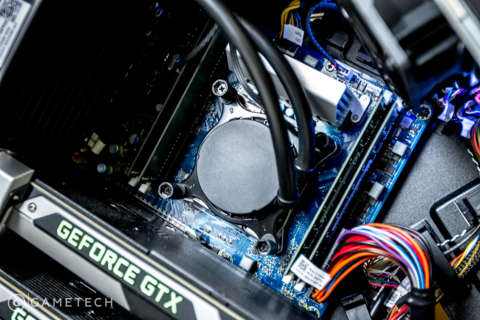
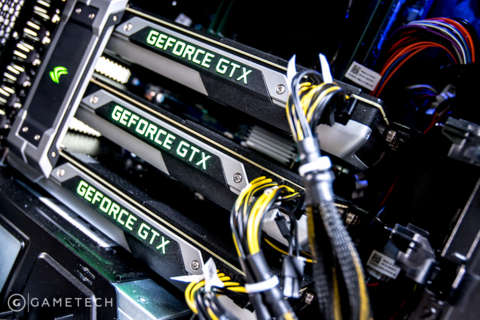
With three GTX 980s and Haswell-E on board, it's no surprise that the Area 51 breezes through even the most demanding of games at 1080p and 1440p. What is surprising is just how quiet the machine is under load, with the spacious chassis and watercooling system doing a great job of keeping the CPU cool. There's also a decent amount of space between each of the GTX 980s, which helps the reference coolers keep the GPUs cool and not starved for air.
At 4K (using Nvidia's Dynamic Super Resolution technology), the system just about pushes over 60fps in most games, but it still couldn't quite manage the same with Metro: Last Light and Crysis 3. Clearly, 4K at a consistent 60fps is still out of reach for this GPU generation, even with three cards in tow. A single-card solution for 4K at 60fps is likely to be some ways away yet.
For comparison's sake I've included the benchmarks from the X99 rig I built a few weeks ago. That machine only had two GTX 980s rather than three, which should give you a rough idea of the performance boost you get by adding a third GPU.
1440p Benchmarks
| Game | Settings | Resolution | Area 51 Average FPS |
|---|---|---|---|
| Tomb Raider | Ultra, FXAA, TressFX | 1440p | 145 |
| Metro: Last Light | Ultra, Ultra Tessellation, No SSAA | 1440p | 128 |
| Bioshock Infinite | Ultra, AA | 1440p | 207 |
| Crysis 3 | Very High, FXAA | 1440p | 109 |
| Battlefield 4 | Ultra, 4XMSAA, HBAO | 1440p | 149 |
| Watch Dogs | Ultra, Temporal SMAA, MHBAO, High Textures | 1440p | 79 |
| Assassin's Creed IV: Black Flag | Ultra, HBAO+ High, FXAA | 1440p | 61 |
| Far Cry 4 | Ultra, SMAA, Volumetric Fog, God Rays, Fur | 1440p | 97 |
4K UHD Benchmarks
| Game | Settings | Resolution | Area 51 Average FPS | Custom X99 Build Average FPS (2X GTX 980) | |
|---|---|---|---|---|---|
| Tomb Raider | Ultra, TressFX, No AA | DSR 4K | 65 | 46 | |
| Metro: Last Light | Ultra, Ultra Tessellation | SSAA X4 | 55 | 55 | |
| Bioshock Infinite | Ultra, No AA | DSR 4K | 123 | 109 | |
| Crysis 3 | Very High, No AA | DSR 4K | 54 | 38 | |
| Battlefield 4 | Ultra, No AA, HBAO | DSR 4K | 120 | 80 | |
| Watch Dogs | Ultra, FXAA MHBAO, High Textures | DSR 4K | 73 | 52 | |
| Assassin's Creed IV: Black Flag | Ultra, HBAO+ High, No AA | DSR 4K | 61 | 59 | |
| Far Cry 4 | Ultra, No AA, Volumetric Fog, God Rays, Fur | DSR 4K | 86 | - |
Verdict
There's no arguing with the performance of the Area 51, but what else would you expect from cream of the crop PC components? This is a supremely powerful machine, one that would be just as good for video editing and 3D rendering work as it would for playing the latest shooter. Sure, Intel's cheaper Devil's Canyon processors and their faster clock speeds are a better choice for the non-multithreaded world of PC games, but if you want the best of the best and the ultimate in bragging rights, Haswell-E is it.
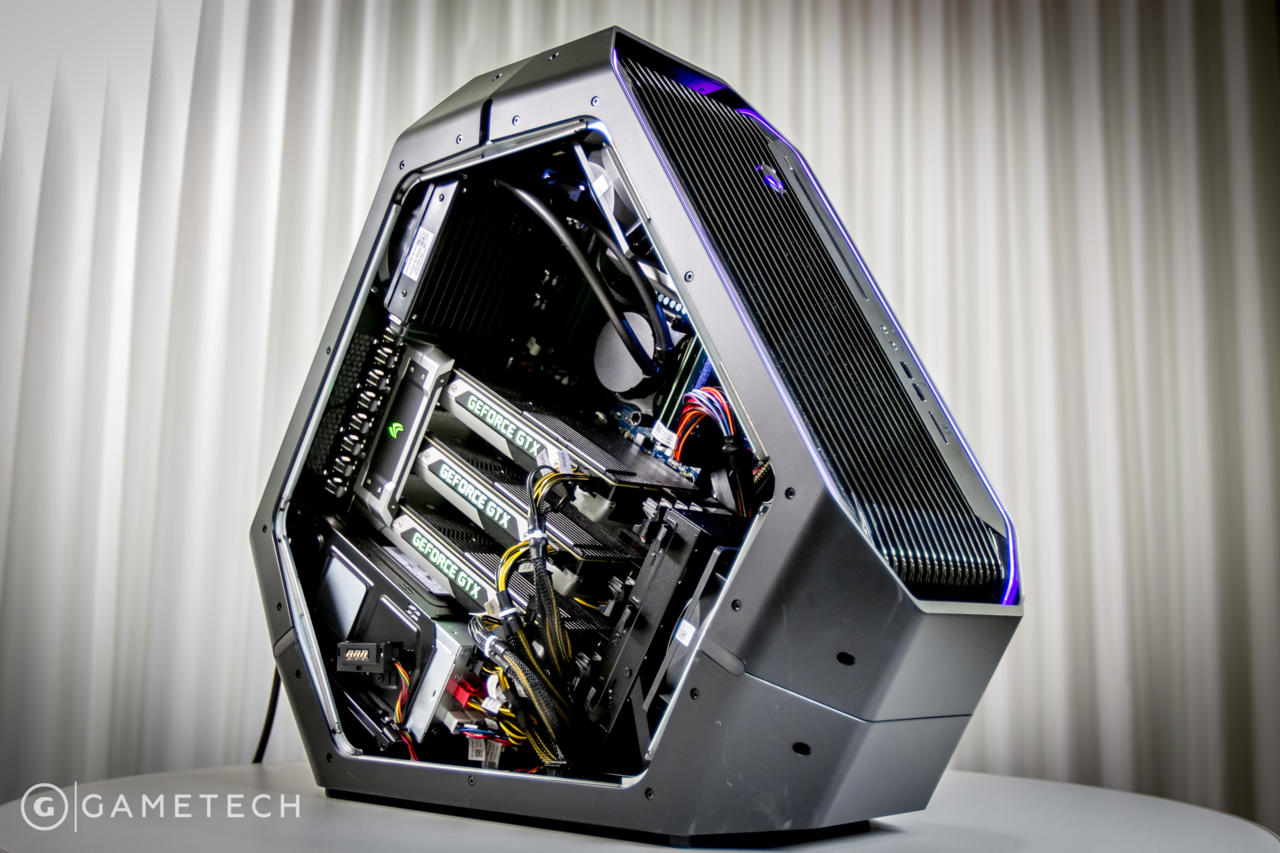
As for whether the Area 51 is the best way to get into Haswell-E, I'm not so sure. Yes, it's a well-designed, quiet machine, and you might even be into its unique looks. Its price also compares favourably with X99 rigs from the likes of Origin PC and Digital Storm, undercutting them by a few hundred dollars. But, unless you really want a pre-built gaming PC and that triad case (and the after sales support that comes with it), the smart option is to build your own PC.
Not only can you save several hundred dollars, but you can actually build a more powerful PC too, particularly when you consider the Area 51 skimps on some of Haswell-E's features, and on some of its internal components. There have always been savings to be had building your own high-end PC, and sadly the Alienware Area 51 is no exception.
